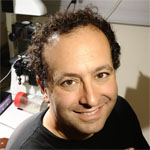This blog – like many others I presume – was started to give me a place to vent about a pet peeve. The target of my particular ire is the way that scientists who should know better continue to tout every new paper on the function of non-coding DNA as a new discovery that – GASP – “junk DNA is not really junk afterall“.
The latest example surrounds a paper from my friends and former neighbors Jim Noonan, Shyam Prabhakar and Eddy Rubin published last week Science (I won’t link the paper because it’s not in an open-access journal – another pet peeve…).
Prabhakar et al. Human-specific gain of function in a developmental enhancer. Science 321(5894):1346-50.
The paper reports on a the discovery of a conserved noncoding sequence (named HACNS1) that acts as a developmental enhancer and has evolved extremely rapidly in humans and has gained a strong limb expression domain relative to the orthologous elements from chimpanzee and rhesus macaque. It’s a beautiful piece of work that has both intriguing implications for human evolution and will serve as a paradigm for similar studies in the future.
What bothers me is not the paper, but the press release that accompanied it. Here’s the headline and beginning:
Yale Researchers Find “Junk DNA” May Have Triggered Key Evolutionary Changes in the Thumb and Foot.
New Haven, Conn. — Out of the 3 billion genetic letters that spell out the human genome, Yale scientists have found a handful that may have contributed to the evolutionary changes in human limbs that enabled us to manipulate tools and walk upright.Results from a comparative analysis of the human, chimpanzee, rhesus macaque and other genomes reported in the journal Science suggest our evolution may have been driven not only by sequence changes in genes, but by changes in areas of the genome once thought of as “junk DNA.”
So here’s a fascinating observation about genome evolution, and yet they feel compelled to – once again – peg the story on the discovery that there is actually something going on in “areas of the genome once though of as ‘junk DNA'”.
Of course Noonan and colleagues know better. They work on non-coding DNA precisely because they know it is NOT junk. So why, when it’s time to make a pitch to the local press officer, do they fall back on this old bromide? It obviously appeals to writers – who love it when they can pitch a story as overturning orthodoxy. It seems minor, but pegging it this way leads to some really attrocious misrepresentations of current biological knowledge.
Here are some headlines on news stories that followed the press release:
Who Says It’s ‘Junk DNA’? (Hartford Cuorant)
Enjoy Your Opposable Thumb? Thank your “Junk DNA” (Discover Magazine)
Meaningless Genetic Code Helped Form Human Hands (Telegraph)
Why is this such a problem? Well, first it’s just WRONG. We’ve known almost since the dawn of the DNA age that not all DNA is protein-coding, and that there are essential functions encoded in non protein-coding DNA. Unfortunately, for initially practical reasons, a disproportionate amount (surely in excess of 90%) of research has focused on protein-coding genes, fostering the faulty impression – amongst scientists as well as science writers – that the ~3% of the human genome that is protein-coding contains > 90% of the function. And it would be great if scientists who, because they work on non-coding DNA are particularly aware that this view is incorrect, would stop promoting it in the popular press.
A second, and less obvious, problem is that this view has played into the hands of the intelligent design crowd. For reasons that baffle me, smart scientists continue to cite the “fact” that much of the human genome is non-functional as evidence against intelligent design. And every time a new study comes out reporting that “junk DNA” is not junk, the ID’ers jump on it as validation of the predictions of ID. It’s hooey of course, but we needn’t give them the opportunity.
So, I am making it my mission to shame everyone who uses the term “junk DNA” or its equivalent when talking about new research on the function of non-coding DNA. And every year I’m going to give out “JUNKY” awards to the most egregious examples. Send me your candidates!
 I'm a biologist at UC Berkeley and an Investigator of the Howard Hughes Medical Institute. I work primarily on flies, and my research encompases evolution, development, genetics, genomics, chemical ecology and behavior. I am a strong proponent of open science, and a co-founder of the
I'm a biologist at UC Berkeley and an Investigator of the Howard Hughes Medical Institute. I work primarily on flies, and my research encompases evolution, development, genetics, genomics, chemical ecology and behavior. I am a strong proponent of open science, and a co-founder of the 